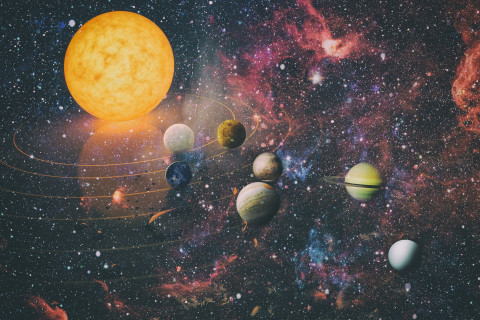EOSC 310 · The Earth and the Solar System

The Earth as a planet: its composition, internal dynamics, and surface evolution. Rotation, magnetic field, plate tectonics, earthquakes, volcanoes. The ocean, atmosphere, and biosphere as components of a varying geo-environment. No background in science or mathematics is required. Not for credit for students in specializations administered by the Department of Earth, Ocean, and Atmospheric Sciences. (https://www.eoas.ubc.ca/undergrad/degrees). Not for credit if you have already taken EOSC 110. Class standing of 2 required.
EOSC310 Video: HERE
Syllabus
Generalized Syllabus: HERE
Course Content
NOTE: Course content may vary by year
MODULE 1 - Building the Solid Earth
In Module 1, we will consider the broad-scale processes that provide context and an understanding of our place within the greater universe and the solar system. We will also focus on the fundamental materials our planet is composed of and how we can use those materials to tell Earth's story through time. Module 1 units:
- Unit 1: How did the universe, our solar system and our planet come into existence?
In this unit, we will examine the broadest scale of space and time and how the early processes and events that formed the universe and solar system are critical to our understanding of the nature of the planet we live on today.
- Unit 2: Earth Materials and Telling the Time
In unit 2, we will focus on the materials that comprise the Earth and how we can use those materials to place geological features in the context of a story through time.
- Unit 3: Online Lab 1
In Lab 1, we will learn how to unravel the stories hidden in plain sight in the rocks all around us.
MODULE 2 - Our Active Planet
In Module 2, we take a look into Earth's deep interior. We also consider Earth's fractured surface in the context of the Grand Unifying Theory of Geology, Plate Tectonics.
- Unit 4: The Earth From Inside Out
Unit 4 will uncover the hidden depths of Planet Earth, from the crust to the core. In Activity 2, you use Earthquakes to peer into Earth's interior.
- Unit 5: Earth's Tectonic Surface
In this unit, we will see how plate tectonics accounts for our planet's diverse surface and explains the location of earthquakes and volcanoes.
- Unit 6: Lab 2
MODULE 3 - Earth: Ancient, Modern & Beyond
In Module 3, we consider the Earth Systems earliest origins and chart their possible near and long-term future. The module will focus on the biosphere and consider the possibility of life on other planets.
Module 3 units
- Unit 7: Early Earth Systems and Blooming of Life
In unit 7, we will examine the origins of Earth's crust, oceans, atmosphere and biosphere. In particular, we will consider where life might have emerged and the characteristics of these early life forms.
- Unit 8: Evolution & Classifying Diversity - Lab 3
In Lab 3, we will learn how to classify life and how to use fossils to chart the emergence of new species over time.
- Unit 9: Modern Earth & the Future
In Unit 9, we will look at planet Earth's near and distant future prospects. In activity 3, we delve deeper into Earth System Science and explore the importance of feedback mechanisms.
- Unit 10: Search for Other Worlds
In the concluding unit, we pose a pivotal question: does Earth alone possess a biosphere? Expanding upon this inquiry, we probe the existence of planets analogous to Earth, contemplating whether life has blossomed elsewhere in the vast expanse of the universe.